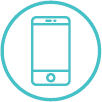I got a call a few weeks ago from a distraught family that had multiple reasons to feel distress. Just days after giving birth to premature twins, Mom discovered lice on her toddler’s head. She called another in-home lice service, expecting to be rid of the problem quickly so she could focus on taking care of her tiny newborns. Unfortunately, things didn’t go that way at all.
As I entered the client’s home, I could feel the unhappy energy swirling through it—around the piles of laundry, over the furniture shrouded in sheets. A toddler sat in a high chair in a kind of quarantine, isolated from her environment and family.
If you’ve ever tried to keep a two-year-old trapped in a high chair while the rest of the family moves freely about, you understand what that was like.
Whenever I see those familiar heaps of laundry and the telltale covering on the furniture, I know that the family I’m about to treat has been unnecessarily alarmed by unwise advice, at a time when they were most vulnerable.
The Story
The in-home lice company that preceded me had insisted that the family needed a deep (and expensive) home cleaning, and treated the family with products that contained chemicals inappropriate for a mother nursing newborn twins, or a toddler. Their actions ratcheted up the family’s suffering, adding insult to injury. And when they left, they still hadn’t completely cleared the toddler’s head.
To make matters worse, while that lice treatment team was going about their radical house cleaning, one of the newborns had to be rushed back to the hospital NICU.
By the time I arrived the next morning, the family was exhausted and frightened beyond my ability to assign words to describe what they had experienced.
I understood immediately that my primary job was to change the energy of fear into a sense of empowerment, so I gave the parents the science-based information they needed to relax, and I thoroughly cleared the toddler’s head of lice, liberating her from her lofty prison.
The Lessons
The family had experienced what some life coaches call “clean pain” and “dirty pain.” Clean pain is about grief or pain resulting from an injury—“my child has lice and she’s going to have to sit still for an hour while a stranger combs her hair.” That’s a painful enough thought by itself, especially when a parent feels powerless or overwhelmed. Clean pain is sometimes unavoidable—for instance, when you get hurt. Dirty pain is about the stories we tell ourselves about the initial injury, for example, things like:
“I should have prevented it—I’m not a good mom.”
“I’m going to find out who gave us lice and let them know how much harm it has caused.”
“I can’t believe this is happening to us. Why is this happening to us???!!”
The easiest way to stop dirty pain is to, well, stop.
It takes some doing to recognize that we’ve chosen to make things worse than they already are, but once we do, we get our power back, and we’re free to choose a different way of looking at things.
We do have clients that can’t see their way past the ickiness of having lice, and that’s ok. They ARE icky, but they’re not dirty. They represent the clean pain of injury—in this case, infestation. It’s just something that happens—not good or bad.
What’s Dirty Is What We Decide Is Dirty
After assuring them that they could safely uncover the furniture and suspend the washing and deep cleaning operations, I left the family in good shape to resume their “normal” lives—which of course is relative when you have twin preemies and a two year old.
It’s odd sometimes to think that a nitpicker can make a difference in the lives of the families I work with, but in my small but significant way, I’m teaching people a valuable lesson: it is possible to accept a less-than-ideal situation as it is, and to resist making it feel worse by allowing the crazy-talk voices in their heads to take charge.


